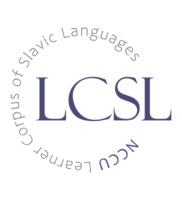2023-02-20 專書出版 Monograph Published
Lin, M. S.-H. (2023). Pragmatické užití instrumentálu v češtině: z hlediska L2 pedagogiky(Pragmatic Uses of Czech Instrumentals: From the Perspective of L2 Pedagogy). Taipei: Royal Orchid International.
Abstract
This study highlights the pragmatic use of the Czech instrumental case in ‘shell nouns’ (Schmid, 2000) or ‘signalling nouns’ (Flowerdew, 1994, 2003; Flowerdew & Forest, 2015), which refer to abstract nouns that “deal with the creation of cohesive ties within the text, and signal textual units and the boundaries between them” (Vergaro, 2018, p. 17). The case study examining such pragmatic use of the Czech instrumental case is based on Czech translations (see Appendix 1) of 149 example sentences with English shell nouns (Schmid, 2000): out of this number, the assumed Czech ‘shell nouns’ most commonly seen with nominative case marking account for 28.86 %, followed by 26.85 % used with instrumental case marking.
Within the hypothesis of this study, the author further investigates natural language use, including the written SYN v. 8 for L1 data, and the learner corpora CzeSL-SGT and LCSL for L2 data. From the corpus analysis in Chapter 3, the L1 data confirm the hypothesis that there are construction patterns where Czech instrumentals function as ‘shell nouns’. On the other hand, as discussed in Chapter 4, such instrumental patterns might represent an obstacle for L2 learners.
This study not only establishes a theoretical model and puts forward a hypothesis derived from a crosslinguistic construction comparison, but also arrives at the conclusion that one language-specific strategy of such constructions in Czech is when abstract nouns appear in instrumental case and in specific lexico-grammatical patterns.
Second, this study introduces a different discussion on the use of Czech instrumentals from the pragmatic point of view, indicating that the Czech instrumental use can represent a continuum joining the syntactic and semantic linguistic expression. It can also reveal the possible consciousness of the language user’s choice of case-marking, to signal the role specific notions have in a text (Janda et al., 2022).
In addition, based on the L1 corpus analysis, this study demonstrates further that different shell nouns have different construction pattern preferences, and the commonly used construction patterns of non-prepositional instrumental shell nouns are ‘SN + být + N/NP’, and ‘SN + být + INF’, which are both pragmatic in focusing and topicalizing with an emphatic or contrastive focus (Schmid, 2000, p. 337). On the other hand, for prepositional instrumental shell nouns, the frequent construction patterns include ‘s + SN + N-GEN’, and ‘s + SN + INF’. According to Schmid (2000, pp. 330-331), such construction patterns tend to be used as a focus on new information, but not necessarily related to the context.
Moreover, the investigation on L2 data reveals that Czech instrumentals are on average less used than in L1 data. This implies the learners may be unfamiliar with their usages or may not be aware of how to use them due to the lack of a complete and comprehensive teaching guide in learning. In addition, in L2 data there is a limited number of construction patterns of instrumental shell nouns, and the modest usage is evenly distributed among learners of Czech without differentiating between their knowledge of Czech or length of study. It is clear that the use of these instrumental shell nouns is not directly relevant with the language level of Czech learners or the time that they dedicated to language study.
This study further focuses on L1 Chinese learners’ language data, and concludes that a contrastive analysis between Czech and Chinese would be beneficial to the pedagogy instructions on the uses of the Czech instrumental shell nouns. Flowerdew (2010, p. 38) also considers the pedagogic intervention of ‘shell nouns’ or ‘signalling nouns’ as significant, in order to “help in bringing the learners nearer to an L1 model, which, it is assumed, is likely to be more coherent”. Therefore, from the perspective of L2 pedagogy, this study highlights that the appropriate use of the Czech instrumentals as ‘shell nouns’ can be considered as an important dimension not only in enhancing Czech writing performance in text organization, but also the reading ability in information tracing and text summarization for learners of Czech.
